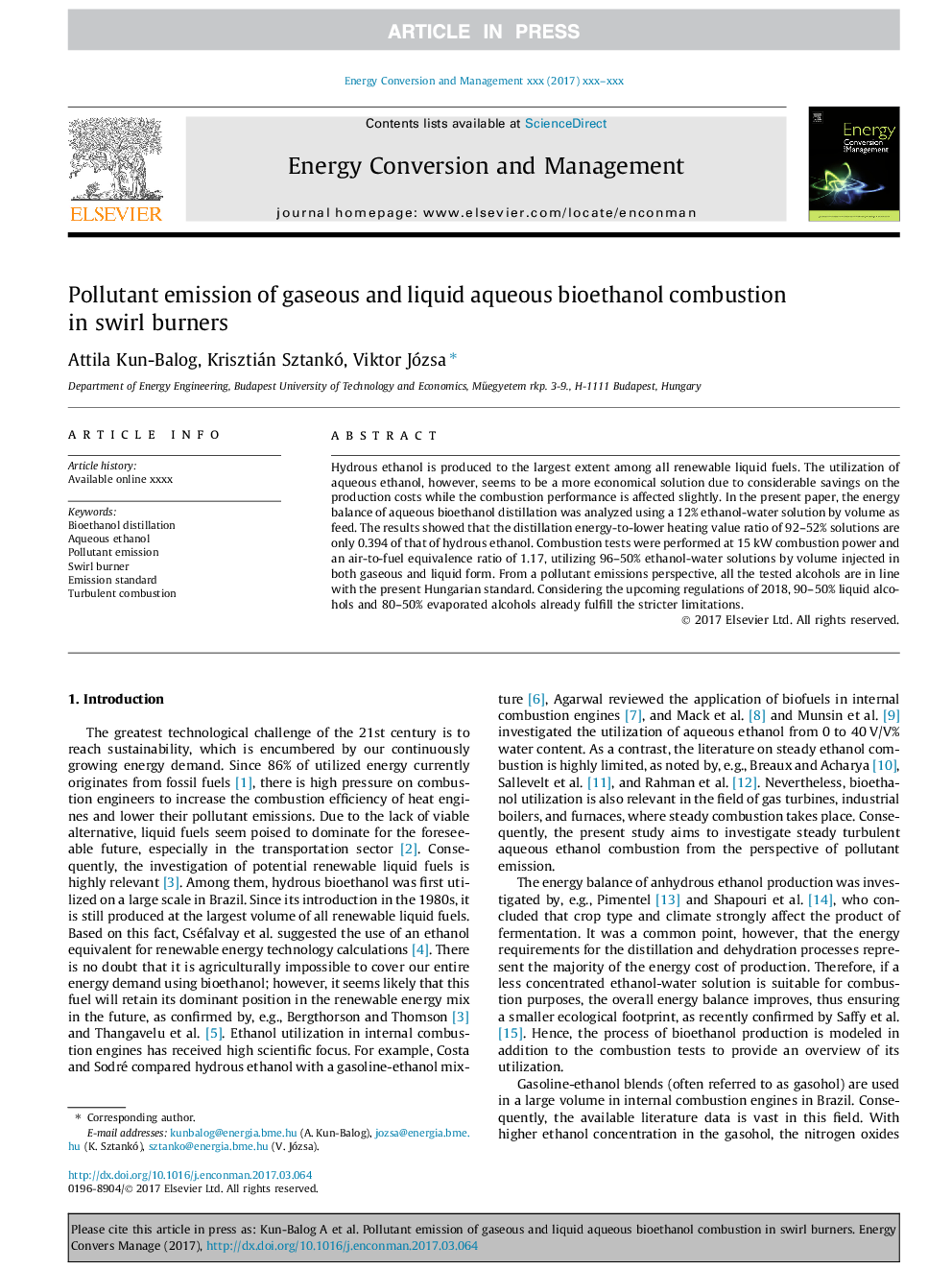| Article ID | Journal | Published Year | Pages | File Type |
|---|---|---|---|---|
| 5012471 | Energy Conversion and Management | 2017 | 8 Pages |
Abstract
Hydrous ethanol is produced to the largest extent among all renewable liquid fuels. The utilization of aqueous ethanol, however, seems to be a more economical solution due to considerable savings on the production costs while the combustion performance is affected slightly. In the present paper, the energy balance of aqueous bioethanol distillation was analyzed using a 12% ethanol-water solution by volume as feed. The results showed that the distillation energy-to-lower heating value ratio of 92-52% solutions are only 0.394 of that of hydrous ethanol. Combustion tests were performed at 15Â kW combustion power and an air-to-fuel equivalence ratio of 1.17, utilizing 96-50% ethanol-water solutions by volume injected in both gaseous and liquid form. From a pollutant emissions perspective, all the tested alcohols are in line with the present Hungarian standard. Considering the upcoming regulations of 2018, 90-50% liquid alcohols and 80-50% evaporated alcohols already fulfill the stricter limitations.
Related Topics
Physical Sciences and Engineering
Energy
Energy (General)
Authors
Attila Kun-Balog, Krisztián Sztankó, Viktor Józsa,
